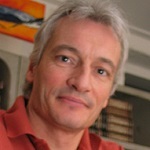 |
 |
Professor Dirk De Ridder MD, PhD
Department of Surgical Sciences, Dunedin School of Medicine, University of Otago, Dunedin, NZ
Professor De Ridder is founder and director of the BRAI²N (Brain Research consortium for Advanced, Innovative & Interdisciplinary Neuromodulation). His main interest is the understanding and treatment of phantom perceptions (sound, pain), especially by use of functional imaging navigated non-invasive (TMS, tDCS, tACS, tRNS, LORETA neurofeedback) and invasive (implants) neuromodulation techniques. He has developed “burst” and “noise” stimulation as novel stimulation designs for implants, and is working on other stimulation designs.
Professor De Ridder has published 35 bookchapters, co-edited the Textbook of Tinnitus, and has authored or co-authored 221 papers of which 199 pubmed listed papers. 100 papers deal with phantom sound perception. He is reviewer for more than 60 journals.
|
|
Abstracts
The Science Behind Spinal Cord Stimulation
Spinal cord stimulation (SCS) is an efficacious way to suppress chronic pain related to complex regional pain syndrome, failed back surgery syndrome, refractory angina as well as in chronic critical limb ischemia. SCS not only reduces pain but also improves quality of life, reduces analgesic consumption, and allows some patients to return to work with minimal side-effects apart from paresthesia.
Recently paresthesia free stimulation was developed, either by using high frequency (10.000 Hz) or burst stimulation, both of which seem to be more efficacious than tonic stimulation. The clinical application of these 3 stimulation designs will be discussed.
The Clinical Application of Spinal Cord Stimulation
Spinal cord stimulation (SCS) is based on the pain gate theory, which suggests that pain is the result of a deficient inhibitory effect of large Abeta fibers on the pain transmitting Adelta and C-fibers. Electrically stimulating the Abeta fibers in the spinal cord is assumed to suppress the pain transmission from the periphery to the brain. However now it has become clear that the pain-improving effect of SCS is related to a combination of spinal and supraspinal mechanisms. The spinal mechanism involves antidromic activation of ascending dorsal column fibers, but SCS might also interact via orthodromic ascending fibers with the descending pain-inhibitory pathway.
|